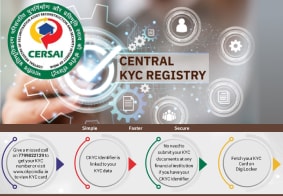CKYC Registry
-
Customer Service Contact us Service request Locate a branch
Find all the help you need
Scan the QR, get our app, and find help on your fingertips

Help CenterSupport topics, Contact us, FAQs and more
-
Login
Are you ready for an upgrade?
Login to the new experience with best features and services
-
Login
Are you ready for an upgrade?
Login to the new experience with best features and services
- Accounts
-
Deposits
IDFC FIRST Bank Deposits
View all Deposits -
Loans
IDFC FIRST Bank Loans
View all Loans - Wealth & Insure
-
Payments
IDFC FIRST Bank Payments
View all Payments -
Cards
IDFC FIRST Bank Cards
View all Cards - Blogs
- Corporate Account
-
Cash Management Services
IDFC FIRST Bank Cash Management Services
View all Cash Management Services - Supply Chain Finance
-
Corporate Lending
IDFC FIRST Bank Lending
View all -
Treasury
IDFC FIRST Bank Treasury
See more details - NBFC Financing
Support topics, Contact us, FAQs and more
- IDFC FIRST Bank Accounts
-
Savings Account
-
Corporate Salary
Account -
Senior Citizens
Savings Account -
First Power
Account -
Current Account
-
NRI Savings
Account -
TASC Institutional
Account -
Savings Account
Interest Calculator
- IDFC FIRST Bank Deposits
-
Fixed Deposit
-
Recurring Deposit
-
NRI Fixed Deposit
-
Safe Deposit Locker
-
FD Calculator
-
RD Calculator
- IDFC FIRST Bank Loans
-
Personal Loan
-
Consumer Durable
Loan -
Home Loan
-
Business Loan
-
Professional Loan
-
Education Loan
-
New Car Loan
-
Pre-owned Car Loan
-
Two Wheeler Loan
-
Pre-owned Two
Wheeler Loan -
Commercial Vehicle
Loan -
Gold Loan
-
Loan Against Property
-
Loan Against Securities
-
Easy Buy EMI card
-
Personal Loan
EMI Calculator -
Education Loan
EMI Calculator -
Home Loan
EMI Calculator -
EMI Calculator
-
Personal Loan Eligibility Calculator
- IDFC FIRST Bank Wealth & Insure
-
FIRST Select
-
FIRST Wealth
-
FIRST Private
-
Mutual Funds
-
Sovereign Gold Bond
-
Demat Account
-
Term Insurance
-
Life Insurance
-
Health Insurance
-
General Insurance
-
Bonds
-
Loan Against
Securities -
Portfolio Management
Service
- IDFC FIRST Bank Payments
-
FASTag
-
Credit Card
Bill Payments -
UPI
-
Funds Transfer
-
Forex Services
-
Pay Loan EMI
- IDFC FIRST Bank Cards
-
Ashva :
Metal Credit Card -
Mayura :
Metal Credit Card -
FIRST Millennia
Credit Card -
FIRST Classic
Credit Card -
FIRST Select
Credit Card -
FIRST Wealth
Credit Card -
FIRST WOW!
Credit Card -
Deals
-
Debit Cards
-
Co-branded Cards
-
Credit Card
EMI Calculator -
FIRST Corporate
Credit Card -
FIRST Purchase
Credit Card -
FIRST Business
Credit Card
- Premium Metal Credit Cards
-
AshvaLifestyle1% Forex₹2,999
-
MayuraLifestyleZero Forex₹5,999
-
FIRST PrivateInvite Only
- Best for travellers
-
MayuraZero ForexMetal₹5,999
-
Ashva1% ForexMetal₹2,999
-
FIRST WOW!Zero ForexTravelLifetime Free
-
FIRST SWYPTravel OffersEMI₹499
-
FIRST Select1.99% ForexLifestyleLifetime Free
-
FIRST Wealth1.5% ForexLifestyleLifetime Free
-
Club VistaraTravelLifestyle₹4,999
-
IndiGo IDFC FIRST Dual Credit CardTravelLifestyle₹4,999
- Max benefits, Free for life
-
FIRST Classic10X RewardsShoppingNever Expiring Rewards
-
FIRST Millennia10X RewardsShoppingNever Expiring Rewards
-
FIRST Select10X RewardsLifestyle1.99% Forex
-
FIRST Wealth10X RewardsLifestyle1.5% Forex
-
FIRST WOW!RewardsTravelZero Forex
-
LIC ClassicRewardsInsuranceShopping
-
LIC SelectRewardsInsuranceShopping
- Reward Multipliers
-
AshvaLifestyleMetal₹2,999
-
MayuraLifestyleZero Forex₹5,999
-
FIRST ClassicNever Expiring RewardsShoppingLifetime Free
-
FIRST MillenniaNever Expiring RewardsShoppingLifetime Free
-
FIRST SelectNever Expiring RewardsLifestyleLifetime Free
-
FIRST WealthNever Expiring RewardsLifestyleLifetime Free
- Rewards & Credit on UPI
-
FIRST Power+FuelUPI₹499
-
FIRST PowerFuelUPI₹199
-
FIRST EA₹NVirtual1% Cashback₹499
-
FIRST DigitalVirtualUPI₹199
-
IndiGo IDFC FIRST Dual Credit CardUPITravelDual cards
- Fuel and Savings
-
FIRST PowerRewardsUPI₹199
-
FIRST Power+RewardsUPI₹499
-
LIC ClassicRewardsInsuranceShopping
-
LIC SelectRewardsInsuranceShopping
- Express and Flaunt
-
AshvaMetal1% Forex₹2,999
-
MayuraMetalZero Forex₹5,999
-
FIRST SWYPEMIOfferMAX₹499
-
FIRST MillenniaRewardsShoppingLifetime Free
- FD Backed rewarding Credit Cards for all
-
FIRST EA₹NVirtualCashback₹499
-
FIRST WOW!Zero ForexTravelLifetime Free
-
CreditPro Balance TransferTransfer & SaveReduce InterestPay Smartly
- IDFC FIRST Bank NRI Forex Solutions
-
Send money to India-Wire transfer
-
Send money to India-Digitally
-
Send money abroad
-
Max Returns FD (INR)
- IDFC FIRST Bank MSME Accounts
-
Platinum Current
Account -
Gold
Current Account -
Silver Plus
Current Account -
Merchant Multiplier
Account -
Agri Multiplier
Account -
TASC Institutional
Account -
Dynamic Current
Account -
World business
Account -
First Startup
Current Account
- IDFC FIRST Bank Business Loans
-
Business Loan
-
Professional Loan
-
Loan Against Property
-
Business Loan for Women
-
Working Capital Loan
-
Construction Equipment Loan
-
Machinery Loan
-
Healthcare Equipment Loan
- IDFC FIRST Bank Business Solutions
-
Payment Solutions
-
Tax Payments
-
Doorstep Banking
-
Point of Sale (POS)
-
Escrow Accounts
-
NACH
-
Payment Gateway
-
UPI
-
Virtual Accounts
-
As per amendment in the Income Tax Rules, PAN or Aadhaar are to be mandatorily quoted for cash deposit or withdrawal aggregating to Rupees twenty lakhs or more in a FY. Please update your PAN or Aadhaar. Kindly reach out to the Bank’s contact center on 1800 10 888 or visit the nearest IDFC FIRST Bank branch for further queries.
-
-
Most Searched
Sorry!
We couldn’t find ‘’ in our website
Here is what you can do :
- Try checking the spelling and search
- Search from below suggestions instead
- Widen your search & try a more generic keyword
Suggested
Get a Credit Card
Enjoy Zero Charges on All Commonly Used Savings Account Services
Open Account Now
New to banking from the USA as an NRI? Here's a quick setup guide
Key Takeaways
Adding a nominee to your NRI bank account is important for easier fund management in case of the death of the account holder.
A nominee is a custodian of the account balance, which distinguishes them from a legal heir.
You must know what the NRI bank account rules are to nominate the right individuals.
You can complete the nomination online or offline in a few simple steps when opening the NRI account or later on.
If you're an NRI living in the USA, banking isn’t just banking—it’s compliance. Every Indian account, payout, or transfer runs into forms, declarations, and cross-border laws. The country’s financial, legal, and tax systems demand total visibility, and one missed step can spiral into penalties, audits, or freeze-marked funds.
That’s why banking as an NRI from the USA requires more than access—it demands clarity, coordination, and regulatory support. With the right account, you can maintain savings, receive rent, support family, and handle repatriation without second-guessing regulations across time zones.
Frequently Asked Questions
What can you do with an NRI account?
An NRI bank account is specially designed to cater to the needs of NRIs. With an NRI account, you can seamlessly send money from abroad, repatriate funds from India, make investments, avail of loans and insurance, conduct a wide range of financial transactions, etc.
Can I open an NRE and NRO account at the same bank?
Yes, you can open both accounts at the same bank.
Can I convert a regular savings account to an NRE account after becoming an NRI?
No, your regular savings account can only be converted to an NRO account. If you need an NRE account, you must open a new one.
NRE vs. NRO accounts: Which one do you need for banking from the USA?
Once you're classified as a non-resident under the Foreign Exchange Management Act (FEMA), you’re required to shift your banking to either a NRE or NRO Account. Which one you use depends on where your income comes from and whether it needs to be repatriated back to the USA.
Feature |
NRE Account |
NRO Account |
Purpose |
Hold and manage foreign income in India |
Hold and manage income earned in India |
Currency |
Deposited in foreign currency, maintained in INR |
Deposited and maintained in INR |
Taxability in India |
Tax-free (principal + interest) |
Taxable (TDS applies on interest) |
Repatriation |
Fully repatriable (principal + interest) |
Up to USD 1 million/year with documentation |
Best suited for |
Salary abroad, overseas transfers |
Rent, dividends, pension, or business income in India |
Many NRIs open both accounts to separate foreign and Indian income streams. For those NRIs who manage banking from the USA, this distinction supports compliance and smoother transfers. It’s one of the first decisions you’ll make when opening an NRI account.
Tax considerations for USA-based NRIs
As a non-resident, you are taxed only on income accrued or received in India. Common taxable incomes include:
1. Rental income
Income from property in India is subject to tax, with Tax Deducted at Source (TDS) applied by the payer.
2. Dividends and capital gains
Dividends from Indian companies and gains from selling assets (e.g., property, shares, etc.) are taxable.
3. Interest income
Interest on NRO accounts is taxable with TDS, while NRE and Foreign Currency Non-Resident (FCNR) account interest is tax-exempt as long as you maintain the status of being a Non-Resident Indian (NRI) or a Resident and Not Ordinarily Resident (RNOR).
Additionally, India has a Double Taxation Avoidance Agreement (DTAA) with the USA to prevent income from being taxed in both India and your country of residence. To claim DTAA benefits, you must:
1. Submit a duly filled Form 10F online and a Tax Residency Certificate (TRC) from your country of residence
2. Ensure your Indian payers apply the tax rate which is beneficial as per the DTAA or the Income Tax Act
5 Things to check before choosing your NRI bank
Opening an NRI account is one step, but choosing the right bank can make or break your long-term experience. Here’s what to look for before you begin banking from the USA:
1. Remote account setup from abroad
You shouldn’t have to fly in just to get started—look for digital onboarding with minimal documentation.
2. Fully enabled digital banking experience
The bank’s app or portal should let you manage your account end-to-end from the USA.
3. Support for tax documentation
A strong NRI bank provides certificates and reports you’ll need during tax season.
4. Clear repatriation policies
Check limits, paperwork requirements, and turnaround times for moving money across borders.
5. 24/7 customer service with NRI-specific assistance
Look for call-back options, time zone-aligned helplines, or chat tools built for international customers.
In short, the right bank makes digital banking feel as smooth as it would be locally—something that IDFC FIRST Bank delivers to cut down the stress of banking from the USA as an NRI.
How to open an NRI account from the USA
Once you know your residency status and the account type you need, the next step is to set it up without visiting a branch in India. Today, most private banks support remote onboarding, but the actual experience varies widely.
Here’s how to open an NRI account from the USA with IDFC FIRST Bank:
1. Step 1: Check your eligibility
You must be an NRI, Person of Indian Origin (PIO) or Overseas Citizen of India (OCI) to apply.
2. Step 2: Choose your account type
Decide whether you need an NRE account, an NRO account, or both, based on your income sources.
3. Step 3: Gather the necessary documents
Necessary documents include a passport copy, a Visa/OCI card, overseas address proof, and a PAN card. The KYC documents require attestation from authorised entities like overseas branches of Indian banks, notary publics abroad, court magistrates, judges, or the Indian embassy/consulate.
4. Step 4: Submit your application
You can fill out the online application form and upload the necessary certified KYC documents. Once your documents are verified, the account shall be opened. You will be advised on the next steps of account activation by your relationship manager.
Why come to IDFC FIRST Bank for NRI banking from the USA
Now that you know what matters, here’s why IDFC FIRST Bank is one of the most reliable NRI banking partners, especially when banking from the USA.
1. Remote onboarding
Open your NRE or NRO Account digitally, from anywhere in the world—no branch visits required.
2. Dedicated relationship manager
Get personalised guidance from an NRI expert to help manage your finances from abroad.
3. End-to-end digital banking
Enjoy a seamless experience through the award-winning IDFC FIRST Bank Mobile Banking App, including real-time controls and account services.
4. FATCA-compliant documentation
Receive interest certificates and TDS reports to simplify your tax filing.
5. 24/7 global support
Access time zone-friendly helplines, digital services, and NRI-specific guidance when needed.
Recognised by Forbes as one of the World’s Best Banks 2025, IDFC FIRST Bank offers global trust with local expertise. Start your NRI banking journey with IDFC FIRST Bank, where convenience, compliance, and world-class service come together.
What makes IDFC FIRST Bank NRI Banking stand out?
- A range of NRI services, including savings and deposit accounts, remittances, investments, and more
- Interest of up to 7% p.a. with monthly credits
- Zero charges on over 30 savings account services
- IDFC FIRST Bank Mobile Banking App for all your banking services
- A dedicated relationship manager for all your needs
- 360-degree digital onboarding and customer service
- Recognised among the World’s Best Banks 2025 by Forbes in partnership with Statista
Disclaimer
The contents of this article/infographic/picture/video are meant solely for information purposes. The contents are generic in nature and for informational purposes only. It is not a substitute for specific advice in your own circumstances. The information is subject to updation, completion, revision, verification and amendment and the same may change materially. The information is not intended for distribution or use by any person in any jurisdiction where such distribution or use would be contrary to law or regulation or would subject IDFC FIRST Bank or its affiliates to any licensing or registration requirements. IDFC FIRST Bank shall not be responsible for any direct/indirect loss or liability incurred by the reader for taking any financial decisions based on the contents and information mentioned. Please consult your financial advisor before making any financial decision.
The features, benefits and offers mentioned in the article are applicable as on the day of publication of this blog and is subject to change without notice. The contents herein are also subject to other product specific terms and conditions and any third party terms and conditions, as applicable. Please refer our website www.idfcfirstbank.com for latest updates.























